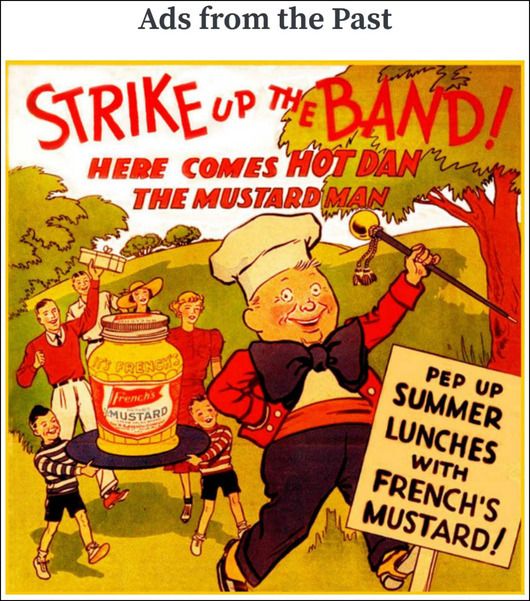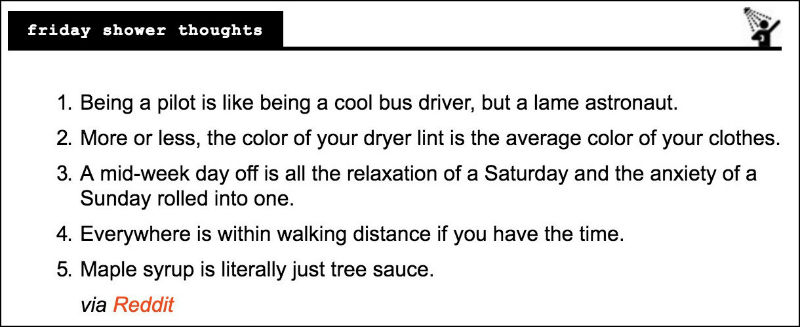Stop thinking of your email marketing like a billboard.
How many times have you ever heard a person say, “Man, I just love that billboard, can’t wait to see another one!”? Probably never. That’s exactly why your marketing emails shouldn’t just be ads that land in your subscribers’ inboxes.
Instead, start thinking of email marketing more like social media — as a conversation and a way to create engagement with your audience.
I probably don’t need to sell you on the value of email marketing. But, in case I do, here are three quick facts that explain why email is so important:
- You are 6x more likely to get a click-through from an email campaign than you are from a tweet. [Campaign Monitor]
- Email is 40 times more effective at acquiring new customers than Facebook or Twitter. [McKinsey]
- Email subscribers are 3 times more likely to share your content via social media than visitors from other sources. [QuickSprout]
To sum those three points up: email marketing works. But, only when it’s good.
Here’s the problem with most email marketing campaigns: they’re billboards — just an ad that lands in your inbox. That’s not the right way to handle email marketing.
For example, how many emails do you get that look like this?

Not only does that email provide absolutely no value to me, I never actually subscribed to receive emails from them.
Let’s find a better way forward. To create a really effective email marketing campaign in 2018, you need to be focused on engagement above all else. According to Litmus’s 2018 State of Email report, engagement has never been more important. Top email clients like Gmail and Outlook are starting to penalize companies whose emails see low engagement.
The only way to keep email engagement high is to stop thinking of your email like an ad, and start creating great email marketing campaigns.
Here’s how to build an email campaign that subscribers will actually look forward to reading:
Step 1: Audit all of your current emails
Take a look at all the emails in your drip campaigns, automated blog emails, one-off emails, and any other email that ends up in someone’s inbox. From there, ask a few questions about each email:
- Who is this email targeted to? If your email is targeted to your entire email list, you’re likely doing something wrong.
- Is there anything valuable about it? Be honest here. Is there anything someone can take away directly from the email without having to click through to a landing page?
- Are we just talking about ourselves? How many times are you using we, our, us, etc.
- Would I open this email if it landed in my inbox? Again, be brutally honest. If your answer is, “No, but I’m not my target audience,” then you still need to rethink your email marketing strategy. That answer isn’t good enough.
- If my competitor was sending this exact email, would anyone notice that this is our content? This is one of my favorite tactics that I learned years ago from Ann Handley. Take your email content and photoshop it into a competitor’s email. Can you tell the difference between their content and yours? If you can’t, you need to do some work. You don’t want to send what your competitors are sending.
When it comes to email marketing audits, you have to be your own harshest critic. Don’t settle for, “good enough” or “maybe.”
Step 2: Don’t audit your competitors
If you’re really trying to create valuable emails that are different from what your competitors are sending, ignore what they’re doing. If you go through their emails and see things you like, you might accidentally (or intentionally) borrow their ideas. That’s a terrible way to set yourself apart.
Instead, audit emails from other companies outside of your industry. If you work in human resources, take a look at the types of emails the best marketing companies are sending, and vice-versa.
Write down everything you like about those emails. Here are a few things to pay attention to:
- What’s the goal of this email?
- What are they doing with subject lines?
- How long are their subject lines?
- What makes the email good? And what makes it bad?
Okay, now it’s time to focus on your new email campaign.
Step 3: Determine frequency and timing
I always like to start with frequency before building the email campaign itself. Frequency will help you determine what to put into the email.
Do you want to send a daily email? Weekly? Or one based off of website action? You need to nail down your ideal cadence for email sending. You likely have data from past email campaigns to help you figure this out, but if not, a few things to think about:
- Daily can work, but if you do daily, you have to be committed to providing value above all else. Think about the daily emails you’re subscribed to. If you open those emails every day, they probably put value over their own company’s priorities. If you expect someone to open your email every single day, there better be a dang good reason.
- You don’t need to send out an email every single time you publish a blog post. Sure, you can go this route, but why not save up a few posts for a bigger blog notification email? Reducing the frequency of blog emails can increase your CTR and open rates.
- “Best practices” may not be the best for you. If you read a report that says, “send your emails at 11am on Tuesday,” you can be sure that hundreds of other marketers have read that same report and are sending their emails at 11am on Tuesdays. That means you’re going to have more competition. Use data to determine the best time for you. Or better yet, just ask your audience when they would prefer to receive emails.
Step 4: Determine the content of the email
Sooo, like, what are you putting in the email? Allow me to suggest…valuable content.
But what does that actually mean? Valuable content is content that entertains, educates, or informs.
- Entertaining content can be something purely for fun. A relevant gif, a quiz, a tweet that resonated with you, etc. (More on this in step 5)
- Educational content should provide actionable takeaways that readers can put into place today.
- Informational content should be newsworthy content, but you have to be timely with this. News content is difficult to do without being late to the game.
Better yet, have all 3 in one email. I always recommend having a few sections to your email. It doesn’t always make sense to send one email about one topic. Your marketing emails should have multiple pieces to them…most of the time.
The key thing to keep in mind here is that none of this content is about selling your products/services. It’s about teaching your reader something. Ignore yourself and your own goals for now. You can work on those in Step 6.
Here’s another important point: give people what they want in the email itself. Don’t do the typical blog post title with a button to read more. Give your reader the content of the blog post in the email. Or at least a quality summary of the blog post in the email.
Saving your subscribers a click or two and giving them takeaways directly in the email will go a long way. If you truly believe in providing value for your subscribers, this is a way to do it.
Step 5: Add some “fun” content
I mentioned this in Step 4, but it’s worth repeating because you definitely need it in your emails. “Fun” content is purely entertaining content. It’s not going to help your business directly, but it will get people to open your email (which will help your business directly).
This could be a relevant meme to your industry, an interesting tweet from an influencer, a Spotify song you’re feeling right now, or a whole number of other things. Get creative with it!
If you’re a subscriber to the Daily Carnage, our “fun” content is the Ads from the Past section. It’s just a vintage ad, but I can’t even count the number of people who tell me that the Ads from the Past is their favorite part of our email.
Step 6: Add your CTAs
Okay, we both know your boss is going to want to see some sort of “sell” in the email. I’ll allow it.
Ideally, you’ll have a few different sections to your email. Add your CTAs in between the sections. You can add CTAs for discounts, downloadables, Hire Us forms, social media links, etc. Use them sparingly, and if you have the ability to change/remove them, that’s even better.
Why would you want to change/remove them? A few reasons:
- Ad fatigue is a real thing. People get tired of seeing the same ad over and over again, and they’ll quickly tune it out. Changing the offer, changing the position, and even removing them altogether will help keep your CTAs fresh and your CTRs high.
- If you can tie your CTAs into the email content, you’re much more likely to get clicks!
Step 7: Compress and clean
A little bit of housecleaning here. Believe it or not, you actually have to clean your email before sending it.
Chances are you wrote your email in Word or Google Docs and then copied/pasted it into your email client. That’s great. The problem is, when you copy/paste rich text (like the stuff in Word), you’re going to pick up unnecessary code snippets. See below:

That <span> is useless and unnecessary. Too many of them will affect deliverability. Your reader will never notice it, but you can be dang sure that their email client catches it, and it might cause some spam filters to go nuts.
The other thing you absolutely have to do before sending an email is compress your images! I’ll say it again because even seasoned marketing vets forget to do this: compress your images.
Image compression affects deliverability. Larger file sizes mean something is more likely to land in a spam folder. To compress your images, do a few things:
- Make sure all images are .jpg because it’s typically a smaller file size than .png
- If you have Photoshop, you can compress images there easily. If not, use a tool like Compressor.io, which will automatically compress images as much as possible.
Compressing your images is a great habit to get into for any type of publishing — email or web — and it usually doesn’t affect the quality of the image.
Step 8: Send it!
You’re done. Schedule it, send it, and then repeat the process all over again.
Repeating the process is crucial to email marketing. A big part of successful email marketing is consistently providing great emails for your audience.
Consistency will slowly increase your open rates, click rates, and your engagement.
Your first email might not have any ROI, but if you keep delighting your audience, it will come. It’s the same mantra we repeat for all types of marketing — above all else, consistently provide value for your audience.
Bonus: How about some inspiration?
A few emails, and parts of those emails, that I really like:
Hubspot’s email quiz. The marketers at Hubspot know what they’re doing. They just added this pop quiz into their blog notification emails. It’s a simple way to create some engagement, and the correct answer clicks through to a blog post on the topic. Smart. [Sign up here]
 Ads from the Past in the Daily Carnage. Shameless plug here. I love the Ads from the Past in our own emails. It’s a great way to give people something to look forward to in their inbox. [Sign up here]
Ads from the Past in the Daily Carnage. Shameless plug here. I love the Ads from the Past in our own emails. It’s a great way to give people something to look forward to in their inbox. [Sign up here]

The Hustle is a daily tech newsletter. One of my personal favorites. Every Friday, they include random thoughts from Reddit. There’s no real value here other than entertainment. I really enjoy it. [Sign up here]

Stash Wealth’s Happy Hour. I’m a big fan of this financial planning firm’s monthly emails. Their target audience is the “work hard, play hard” crowd. That’s why a cocktail recipe is a great addition to their emails. [Sign up here]

Moz’s blog notification emails. There isn’t anything too special about these emails. I just like the fact that they include the entire blog post in the email. You get everything you need without having to click through to, “Read More.” [Sign up here]
Conclusion
Remember, email marketing isn’t a billboard. You can’t just send ads to your subscribers’ inboxes and expect to have great results. It doesn’t work like that. Great email marketing takes strategy, time, and commitment. Create a plan to provide value for your subscribers and stick to it.







